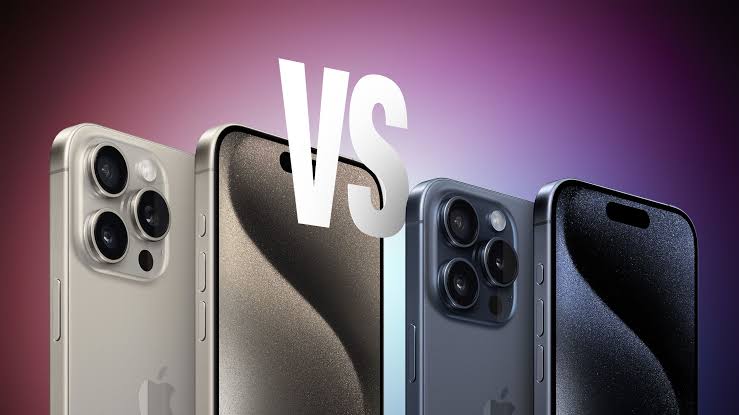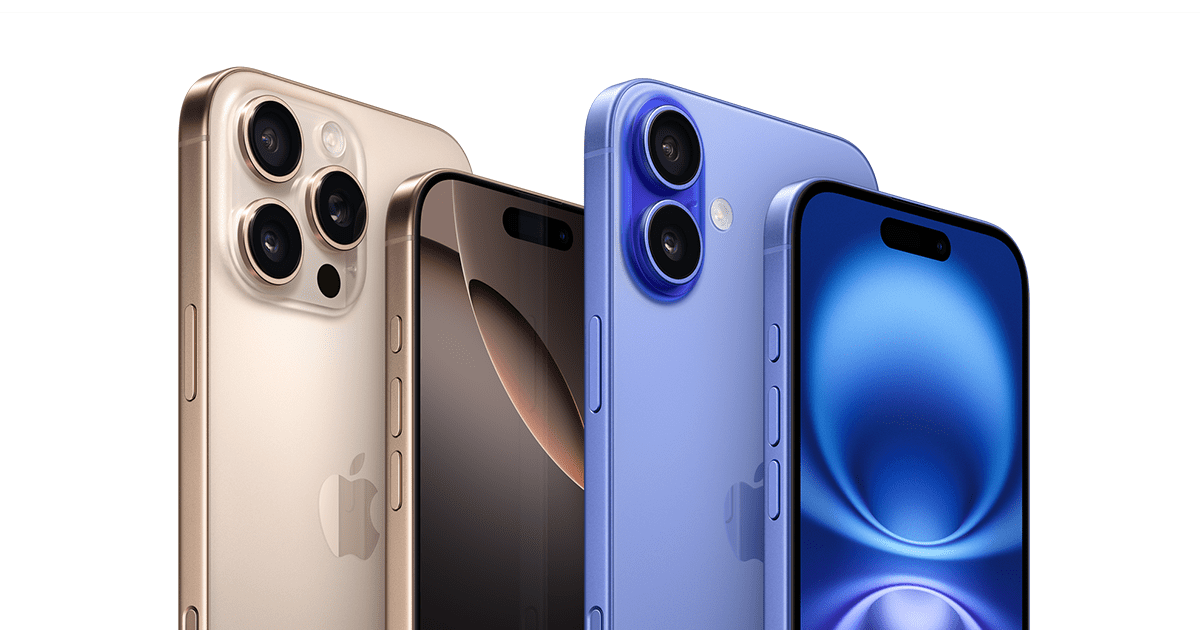The Apple Pro Max line of devices has consistently delivered advanced technology and innovation, catering to users who prioritize performance, quality, and reliability. Apple’s portfolio spans several device categories, including iPhones, iPads, and MacBooks, all of which have seen significant evolution over the years.
Each generation brings unique enhancements, with Apple consistently setting industry standards for device capabilities, design, and user experience.
Exploring these devices by category, model, and history helps illustrate the level of technology and functionality that users can expect. The iPhone Pro Max models are among the most powerful smartphones in Apple’s lineup.
Beginning with the iPhone 12 Pro Max, Apple introduced a design shift to a squared-edge appearance, reminiscent of earlier models, yet with significant upgrades in materials, performance, and camera quality.
The iPhone 12 Pro Max set new standards for smartphone photography with its larger sensor and advanced computational photography.
Following the 12 Pro Max, the iPhone 13 Pro Max continued this trend, focusing on improved battery life, enhanced performance through the A15 Bionic chip, and a more responsive display with ProMotion technology.
The iPhone 14 Pro Max built on these upgrades by introducing the Always-On display, as well as the Dynamic Island, a unique feature that replaces the traditional notch with an adaptive space for notifications and app functions.
The latest, the iPhone 15 Pro Max, takes it even further by incorporating a titanium frame, an improved A17 Pro chip, and a more versatile camera system, which allows users to capture images with stunning clarity and detail.
Each iPhone Pro Max model has demonstrated Apple’s dedication to creating a seamless user experience with robust security, software updates, and integration across Apple devices.
The iPad Pro is another prominent device in Apple’s lineup, designed for users who seek the power of a computer in a more portable form.
Apple’s iPad series includes various models, from the standard iPad to the more powerful iPad Air and the highly capable iPad Pro and iPad Mini. The iPad Pro, specifically, is crafted for professionals and creatives who require intensive graphics and processing power.
With the introduction of the M1 and later M2 chips in recent models, the iPad Pro delivers unparalleled performance for tasks like video editing, graphic design, and multitasking, which were previously reserved for traditional laptops.
Each model also supports the Apple Pencil and Magic Keyboard, transforming the iPad into a versatile productivity device capable of handling complex workflows.
The iPad Mini, while smaller, packs impressive performance in a compact form, making it ideal for users who need portability without sacrificing power.
The iPad Air, bridging the gap between the standard iPad and the iPad Pro, provides balanced performance with features like the A-series chips and support for various accessories, making it a popular choice among students and professionals alike.
In the realm of laptops, Apple’s MacBook lineup continues to stand as a benchmark for performance, design, and durability. MacBook models include the MacBook Air, MacBook Pro, and the powerful MacBook Pro Max.
The MacBook Air is renowned for its lightweight design and efficiency, which is especially enhanced with Apple’s M1 and M2 chips that have transformed it into a high-performance device despite its compact size.
The MacBook Pro, offered in 14-inch and 16-inch models, targets users who need advanced capabilities for professional tasks. The introduction of the Pro Max variation further solidified Apple’s commitment to providing professionals with devices that can handle resource-intensive software and applications.
With features like a Liquid Retina XDR display, extended battery life, and ports catering to professional needs (such as HDMI and an SD card slot), the MacBook Pro series appeals to creators, developers, and those who require both mobility and robust processing power.
These devices exemplify Apple’s continuous improvements, pushing the limits of what a laptop can achieve while maintaining a sleek, user-friendly design.
The history of Apple’s Pro Max line can be traced to Apple’s relentless drive for innovation. Apple began expanding its Pro devices with the iPhone and gradually introduced Pro variants for other product lines, such as the iPad and MacBook.
The term “Pro Max” reflects not only the larger screen sizes but also the more advanced features aimed at power users who seek the highest standards in performance and functionality.
Apple’s decision to integrate custom silicon, such as the M-series chips in iPads and MacBooks, and the A-series Bionic chips in iPhones, has revolutionized these devices, bringing them to a level of performance that is unparalleled in the industry.
By optimizing both hardware and software, Apple ensures that its Pro Max devices deliver seamless experiences across its ecosystem. Apple’s history of innovation is evident in every upgrade, from camera enhancements in iPhones to chip advancements in MacBooks, reflecting the company’s dedication to setting new industry standards.
One of the primary benefits of using Apple Pro Max devices is their performance capabilities. With proprietary chips, such as the A15, A16, and A17 in iPhones and the M1 and M2 in iPads and MacBooks, Apple’s devices deliver exceptional speed, energy efficiency, and graphics capabilities.
These devices cater to a variety of professional applications, from video editing on iPads to software development on MacBooks. Another advantage is the seamless integration across Apple’s ecosystem, which allows users to start work on one device and continue it on another without interruption.
Features like AirDrop, Handoff, and iCloud create an interconnected environment where files, photos, and applications are accessible across all devices, enhancing productivity and convenience.
Another benefit is Apple’s strong emphasis on security and privacy. Apple Pro Max devices offer robust security features, including Face ID on iPhones and iPads, Touch ID on MacBooks, and secure enclave technologies that protect users’ data.
Apple’s commitment to privacy ensures that users have control over their data, with features such as app tracking transparency and data encryption.
Regular software updates ensure that Apple devices remain protected against security threats and stay up-to-date with the latest features, further enhancing the value of these devices for users.
Finally, Apple Pro Max devices are known for their longevity and resale value. Apple’s focus on high-quality materials, such as the titanium frame in the iPhone 15 Pro Max, ensures that these devices are durable and retain their functionality over time.
The resale market for Apple devices remains strong, and their long-lasting performance and support make them worthwhile investments. For users who value both style and functionality, Apple Pro Max devices offer a compelling choice, blending aesthetics with powerful performance features.
Read Also: How to Choose the Right Basketball Shoes for Your Game
Apple Pro Max Device Features and Comparison

Apple’s Pro Max series is a hallmark of technology, setting a high standard across its range of iPhone, iPad, and MacBook devices. These models showcase Apple’s dedication to offering premium features, powerful processors, and exceptional displays, appealing to both professionals and everyday users who seek performance, versatility, and style.
Each product line presents unique strengths, and understanding their distinct features can guide users in selecting the model that best fits their needs. The iPhone Pro Max models have gained widespread acclaim for their advanced capabilities, especially in photography, processing power, and display technology.
Apple’s iPhones have evolved significantly over the years, with Pro Max models pushing the boundaries of smartphone technology. One of the most notable features is the camera system.
Pro Max iPhones incorporate multi-lens setups that allow for high-quality photography and videography, even in low-light conditions. With telephoto, wide, and ultra-wide lenses, users can capture stunning, detailed images, a feature that appeals to photography enthusiasts and professionals.
These camera systems also include advanced computational photography features, such as Night Mode, Deep Fusion, and Smart HDR, which help create high-resolution images by combining multiple frames.
In addition to cameras, the processing power in iPhone Pro Max models is another defining feature. Apple’s custom-designed A-series chips power these devices, with recent models, like the iPhone 15 Pro Max, featuring the A17 Pro chip.
This processor enhances speed, graphics performance, and power efficiency, making the Pro Max line suitable for demanding applications such as gaming, video editing, and augmented reality.
The Pro Max models also boast large Super Retina XDR displays with high resolutions, deep contrast ratios, and ProMotion technology, which delivers a refresh rate of up to 120Hz.
This display technology provides smooth, responsive interaction, enhancing the visual experience for everything from watching videos to navigating applications. Apple’s iPad Pro series represents a fusion of power and portability, offering features that make it a valuable tool for professionals and creatives.
The iPad Pro is equipped with Apple’s M-series chips, originally developed for Mac computers, which endow it with performance capabilities comparable to many laptops.
The iPad Pro’s Liquid Retina XDR display provides rich color accuracy, making it ideal for graphic designers, photographers, and video editors who require high-resolution screens.
This display also supports high dynamic range (HDR) content, offering an immersive viewing experience that rivals traditional displays. An essential accessory for iPad Pro users is the Apple Pencil, which brings precision to tasks like sketching, annotating, and designing.
With its seamless integration, the Apple Pencil provides a natural writing and drawing experience, responding accurately to pressure and tilt.
This stylus, combined with the iPad Pro’s large screen and powerful processors, transforms the device into a versatile tool that can handle complex workflows, from digital art to document editing.
The iPad Pro also supports accessories like the Magic Keyboard, which enhances productivity by adding a full keyboard and trackpad, essentially turning the iPad into a portable workstation.
For those seeking a traditional laptop experience, Apple’s MacBook series offers both portability and power, with Pro models that are engineered to meet the demands of professionals in various fields.
The MacBook Air and MacBook Pro are equipped with Apple’s custom M-series processors, with the Pro models featuring the more advanced versions for intensive tasks.
These processors provide efficient multitasking, allowing users to run resource-intensive applications, such as those used for video editing, coding, or music production. The MacBook Pro models also include large Liquid Retina XDR displays with high brightness and contrast, providing excellent visual clarity for photo and video editing.
Storage is another area where the MacBook series stands out. Users have options to configure their MacBook with up to several terabytes of internal storage, allowing them to store large amounts of data without relying on external devices.
Battery life on the MacBook Pro models is designed to last through demanding workloads, making them ideal for professionals who require reliable performance over extended periods.
This focus on performance, combined with the portability of the MacBook Air and the power of the MacBook Pro, makes these devices suitable for users who need high-functioning laptops capable of handling complex tasks.
Comparing the iPhone, iPad, and MacBook Pro Max models reveals that each serves a specific purpose while maintaining the high standards associated with Apple products.
The iPhone Pro Max is designed for users who want a powerful smartphone with an exceptional camera system and high-quality display for both everyday use and professional-grade photography.
It’s ideal for users who prefer a mobile device that combines multiple functions, including communication, photography, and entertainment, in a single, easy-to-carry unit.
The iPad Pro, with its powerful processors and support for accessories like the Apple Pencil and Magic Keyboard, is well-suited for creatives and professionals who need the performance of a laptop but prefer the flexibility of a tablet.
This model is particularly advantageous for those in fields such as graphic design, architecture, and content creation, as it offers tools that support detailed work and precision. The MacBook Pro, on the other hand, is designed for users who require a robust laptop capable of handling heavy workloads.
Its powerful processors, expansive storage options, and high-resolution display make it a go-to choice for professionals in demanding fields such as video production, software development, and research.
While it lacks the portability of an iPad, the MacBook Pro compensates with processing power and versatility, providing a comprehensive solution for those who need a full computing experience.
Apple offers a range of accessories that enhance the functionality and protection of its Pro Max devices. Cases and screen protectors are essential for iPhones and iPads, offering durability and safeguarding against accidental drops or scratches.
Apple’s cases are designed to be both stylish and functional, with features like MagSafe compatibility for easy wireless charging. For iPad Pro users, accessories like the Apple Pencil and Magic Keyboard extend the device’s capabilities, supporting tasks that require precision and enhancing productivity.
MacBook users benefit from accessories like external monitors, docking stations, and protective cases, which provide expanded workspace setups and protect the device’s aluminum casing from wear.
How to Use and Maintain Your Apple Device

Using and maintaining an Apple device requires a combination of understanding its operating system, applying helpful tips and tricks, and following recommended maintenance and troubleshooting practices.
Whether you have an iPhone, iPad, or MacBook, each device benefits from following best practices in usage and care, ensuring optimal performance, longevity, and user satisfaction. This guide covers essential points for operating systems, tips for efficient use, troubleshooting, regular maintenance, and key purchasing information.
Understanding Apple Operating Systems
Apple devices operate on different, highly optimized systems designed for smooth user experiences and interconnectivity across devices. Each system, while unique, shares core principles and functionalities.
1. iOS (for iPhones): iOS is Apple’s operating system for iPhones, offering a streamlined interface, user-friendly design, and powerful functionality through regular updates. iOS emphasizes privacy, security, and seamless integration with other Apple services like iCloud and Apple Pay.
2. iPadOS (for iPads): Derived from iOS, iPadOS introduces specific features for the larger iPad display. It supports multitasking tools, like Split View and Slide Over, and offers full compatibility with Apple Pencil. This system enables the iPad to function as both a tablet and a productive workstation.
3. macOS (for MacBooks and Mac desktops): macOS supports high-performance computing with professional-grade applications, such as Final Cut Pro and Logic Pro. macOS also emphasizes multitasking, file management, and features like Mission Control, which allows users to organize open applications and workspaces effectively.
Each operating system receives regular updates to enhance security, introduce new features, and refine the overall experience. Users are encouraged to update their systems promptly to benefit from these improvements.
Read Also: All You Need to Know About Walmart Pharmacy
Tips and Tricks for Optimizing Use
Each Apple device has various features that, when used effectively, can greatly enhance productivity and convenience.
1. iPhones: Use Widgets on the Home Screen to access important information quickly. The Control Center, accessible by swiping down from the top right corner, offers shortcuts for Wi-Fi, brightness, and Bluetooth. Additionally, iOS includes Focus Mode, which silences notifications based on the user’s preference, an essential tool for enhancing productivity and reducing distractions.
2. iPads: iPadOS includes Split View and Slide Over for multitasking. To maximize productivity, pair an iPad with an Apple Pencil and take advantage of Scribble, which converts handwriting to text in supported applications. Using the iPad with a Magic Keyboard can transform it into a functional laptop replacement.
3. MacBooks: With macOS, users can leverage Mission Control to organize applications and desktops. The Finder app is essential for managing files, while Spotlight Search enables quick access to files, apps, and even web searches. Additionally, MacBooks support multiple displays, allowing users to connect external monitors to expand their workspace.
Troubleshooting Common Issues
Apple devices are generally reliable, but some issues may arise over time. Basic troubleshooting can often resolve common issues before professional assistance is necessary.
1. Battery Drain: If battery life is shorter than expected, review battery health in Settings (iPhones and iPads) or System Preferences (MacBooks). Reducing screen brightness, disabling unnecessary background app refresh, and closing unused applications can also help preserve battery life.
2. Performance Lag: Clearing cache files and restarting the device regularly can improve speed and responsiveness. For iPhones and iPads, regularly closing unused apps can free up resources, while on a MacBook, checking the Activity Monitor can help identify and quit resource-intensive applications.
3. Connectivity Issues: Wi-Fi or Bluetooth connectivity issues may arise. Restarting the device often helps, or alternatively, resetting network settings in the Settings menu can resolve persistent connectivity problems. For Wi-Fi, switching to a different network temporarily may help determine if the issue is device-related.
4. App Crashes: If applications close unexpectedly, ensure that they are updated to the latest version. Reinstalling the app or restarting the device can often resolve crashing issues.
Apple Support also offers detailed troubleshooting guides on its website, and users can access support directly through the Apple Support app or by visiting an Apple Store.
Maintenance and Optimization
Maintaining an Apple device is crucial for its longevity and consistent performance. Regular care and optimization help avoid potential issues and keep the device in good working order.
1. Storage Management: Keep track of available storage by visiting Settings (iPhones and iPads) or About This Mac (MacBooks). Regularly delete unused apps, large files, and media that are no longer needed. iCloud offers off-device storage, allowing users to free up local storage while retaining access to important files.
2. Software Updates: Regular updates improve security and performance. Set devices to update automatically, especially for essential security patches. Update prompts can be found in Settings on iPhones and iPads, and in System Preferences on MacBooks.
3. Physical Cleaning: Clean devices with a soft, lint-free cloth. Avoid using harsh chemicals, as they can damage screen coatings. Use compressed air for cleaning keyboard crevices on MacBooks.
4. Battery Care: To preserve battery health, avoid exposing devices to extreme temperatures, and charge them with Apple-approved chargers. For MacBooks, consider occasionally running the device on battery power rather than keeping it plugged in constantly.
Buying Guide, Upgrading, and Warranty Information
Purchasing the right Apple device and understanding upgrade and warranty options are essential considerations for both new users and those looking to replace an older device.
1. Device Selection: Choosing the appropriate device depends on individual needs. iPhones are ideal for everyday tasks, communication, and mobile photography, while iPads offer flexibility for media consumption, creative work, and productivity. MacBooks provide powerful computing options for tasks requiring professional applications.
2. Upgrading Devices: Apple devices have a relatively long lifespan, but eventually, upgrading becomes beneficial for accessing the latest features and performance enhancements. Apple offers a trade-in program, allowing users to exchange their current device for a credit towards a new purchase. This program provides a cost-effective way to keep up-to-date with Apple’s latest technology.
3. AppleCare+: AppleCare+ extends the warranty and provides additional coverage for accidental damage. For iPhones and iPads, AppleCare+ offers screen repairs at a reduced fee, while for MacBooks, it covers hardware issues and accidental damage. It is a valuable option for users seeking added peace of mind, especially for devices in heavy daily use or in environments where accidental damage is more likely.
4. Warranty Support: Apple devices come with a standard one-year limited warranty. Users can verify warranty coverage on Apple’s website using the device’s serial number. AppleCare+ extends the warranty and adds coverage for accidental damage, which is particularly useful for high-value items like MacBooks.
Frequently Asked Questions on Apple Pro Max Devices: Complete Guide to iPhones, iPads, and MacBooks

1. What distinguishes Pro Max models from other Apple devices?
The “Pro Max” label signifies the most advanced and premium models within Apple’s lineup. In iPhones, for example, the Pro Max designation indicates top-tier features such as enhanced camera systems, larger screens, and increased battery life.
Similarly, in MacBook Pro Max models, Apple integrates high-performance processors, advanced graphics capabilities, and larger memory options to support professional-grade applications, like video editing and graphic design software.
These Pro Max devices are designed for users who need extra power, enhanced displays, and specific features that go beyond everyday requirements.
2. Which iPhone Pro Max model should I choose: 12 Pro Max, 13 Pro Max, 14 Pro Max, or 15 Pro Max?
Each iPhone Pro Max model has distinct improvements and features, though all provide powerful performance. The iPhone 12 Pro Max introduced 5G compatibility and an improved camera system.
The iPhone 13 Pro Max added advancements in battery life, as well as a ProMotion display with a 120Hz refresh rate, making animations smoother.
The iPhone 14 Pro Max further refined the camera and display technology and enhanced low-light performance. The latest iPhone 15 Pro Max includes titanium construction, USB-C charging, and the A17 Pro chip, optimizing speed and efficiency.
When choosing a model, consider your priorities: the 12 Pro Max remains a solid option for those looking for an entry-level Pro Max device with a good camera and 5G, while the 15 Pro Max is ideal for those wanting the latest innovations in design, camera, and processor.
3. What are the key differences between iPad models, specifically iPad Pro, iPad Air, and iPad mini?
Apple’s iPad lineup includes multiple models tailored to different needs.
a. The iPad Pro is the top-performing model, featuring the M1 and M2 processors, which deliver desktop-level performance, especially when paired with the Magic Keyboard and Apple Pencil. Its Liquid Retina display provides outstanding clarity and color accuracy, making it suitable for creative professionals and intensive tasks.
b. The iPad Air serves as a middle ground, offering powerful performance with the M1 chip at a more accessible price point than the Pro. It’s suitable for users who want a balance between performance and price, making it ideal for students and general users.
c. The iPad mini provides a compact design, great for portability. Despite its size, it offers strong performance and compatibility with the Apple Pencil. The mini is best for users who need a smaller tablet for reading, note-taking, or on-the-go tasks.
4. What makes the MacBook Pro Max models different from the standard MacBook Pro?
MacBook Pro Max models are built to meet the demands of high-end users, particularly professionals in creative and technical fields. These models incorporate Apple’s highest-performing processors, including the M1 Max and M1 Ultra, offering outstanding processing power for intensive applications like 3D rendering, video editing, and machine learning.
MacBook Pro Max models also provide greater RAM options and larger SSD storage capacities, which enhance multitasking and data management capabilities. The display technology is often superior, with ProMotion support and XDR (Extreme Dynamic Range) for high-quality visuals.
These models are best suited for those who require maximum performance in a laptop, whereas standard MacBook Pro models are effective for general professional use but may not meet the demands of advanced computing needs.
5. What are the benefits of using an Apple Pro Max device compared to standard models?
Apple Pro Max devices are designed to cater to users who prioritize performance, display quality, and durability. Benefits include:
1. Enhanced performance: Pro Max devices, including the latest iPhones and MacBooks, contain Apple’s most advanced processors, which improve speed, multitasking, and overall efficiency. This is essential for tasks requiring substantial processing power, such as high-resolution video editing, gaming, and professional applications.
2. Superior display quality: These devices incorporate advanced display technology, such as Super Retina XDR displays in iPhones and Liquid Retina XDR displays in iPads and MacBooks, which offer higher resolution, brightness, and color accuracy.
3. Improved battery life: Pro Max devices tend to include larger batteries, which allow for extended use on a single charge, even with intensive applications.
4. Versatile camera systems: iPhones in the Pro Max line feature multi-lens camera setups that provide better zoom capabilities, low-light performance, and video quality, making them ideal for photography enthusiasts and professionals.
6. How do Apple Pro Max devices handle compatibility with accessories like cases, screen protectors, and keyboards?
Apple offers a wide range of accessories designed specifically for its Pro Max devices.
1. Cases and screen protectors: For iPhones, Apple and third-party manufacturers offer cases and screen protectors tailored to each Pro Max model, ensuring a secure fit and adequate protection. When choosing a case, verify the compatibility with wireless charging if it’s a priority.
2. Keyboards and styluses: The iPad Pro, for instance, pairs seamlessly with Apple’s Magic Keyboard and Apple Pencil, transforming it into a versatile workstation or creative device. MacBook Pro models support a variety of USB-C accessories, including external drives, monitors, and specialized input devices for creative applications.
7. Are Apple Pro Max devices future-proof, and how long can they remain functional with software updates?
Apple Pro Max devices are built to maintain strong performance over several years, supported by regular software updates that enhance functionality and security. Apple typically provides software support for iPhones and iPads for at least five years after their release, while MacBook Pro models receive macOS updates for around eight years.
This long-term support ensures that even older Pro Max devices continue to receive the latest features and security updates, making them a reliable investment. For instance, users with an iPhone 12 Pro Max still receive iOS updates that improve performance and introduce new features, ensuring that the device remains relevant.
Moreover, the quality of materials used in Pro Max devices, such as ceramic shield on iPhones and durable aluminum or titanium frames, adds to their longevity and resilience against wear and tear.
Read Also: Easy Guide On Making Candles At Home
Do you have any questions, suggestions, or contributions? If so, please feel free to use the comment box below to share your thoughts. We also encourage you to kindly share this information with others who might benefit from it. Since we can’t reach everyone at once, we truly appreciate your help in spreading the word. Thank you so much for your support and for sharing!






